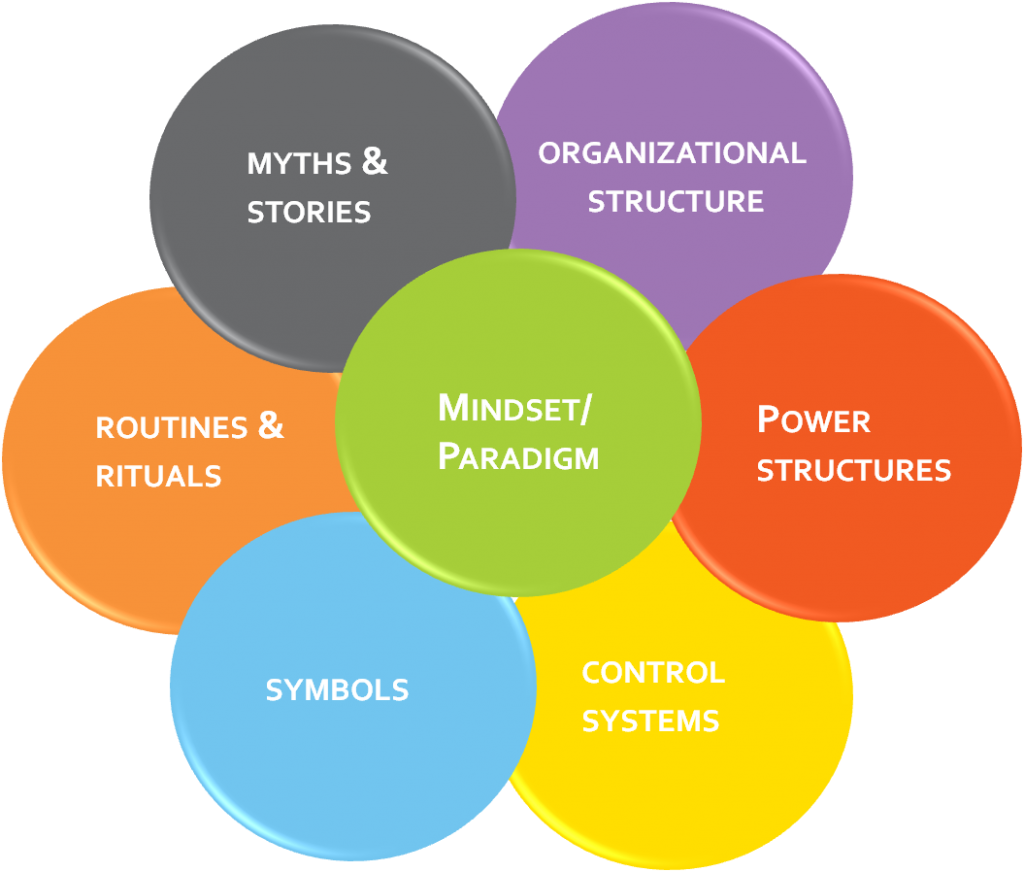Stories, symbols, and rituals. Almost as soon as you know what these represent in the Cultural Web, it’s easy to see how they shape a company’s culture. These are aspects that we tend to interact with directly, we hear, see, or actively take part in them.
Where understanding structure often means taking a holistic perspective—stepping back, in a way—we don’t often need to seek out symbols or stories. Routines, in turn, make up the mesh of our everyday working lives. They span everything from the things we do every day, to what we celebrate and how.
Myths and Stories
You don’t even need to work at a company to have a good sense of at least a few stories. Just by going online, we hear stories about how some CEO overcame all the obstacles to build his company from scratch. We hear about ‘good’ and ‘bad’ actions of organizations—how they have scaled, grown, and responded to the environment. And implicit in a lot of these is a message about how people are expected to behave.
Can you think of a story that your team loves to talk about? There are usually a host of them about any one company that tend to get brought up time and again, usually in specific contexts. During onboarding, stories feature frequently. Inside the firm, they often pop up around the water cooler or coffee machine, with “Remember when…?”
You may have heard about Honda’s first foray into the US market and how nobody cared about small, lightweight motorbikes before the Super Cub. You might even have heard that the first Honda team to go State-side slept on the floor. The point is that stories and myths are a real part of ‘who we are’ and ‘why we do what we do’.
So what are the morals of your stories? Who are their heroes? Do they support or align with your vision? If they don’t, it may be time to try changing this.
Routines and Rituals
The everyday part of ‘how we do things around here’ is linked closely to our control systems, which I looked at in my previous post. Routines, in particular, shape our expectations. Our customers learn to expect certain things too, and depending on how you communicate your vision, this can work in your favor or against you.
In fact, there’s a formal and an informal side to most elements of the web. A routine, for example, can be something that we design around a certain customer flow. Or, they can describe how we behave during meetings. I once worked in a company where everybody would be in the room 5 minutes before our meetings started. Anyone who arrived later (even though it wasn’t strictly ‘too late’) would get strange looks.
It’s only when routines get disrupted that people instantly become aware of them. Rather like unconscious patterns of behavior.
We can shape routines through rewards (controls), but also through the ‘WHY’ of things. With a clear rationale of why we exist and why we want it, the ‘how’ (our routines) can be defined more logically. Doing things because they’ve always been done a certain way isn’t really a good reason for doing them at all—and it can be highly damaging to your progress toward that vision.
If your goal is a learning organization, do you really want to be celebrating an employee’s twenty years in the same position? If your shared vision is to improve lives through innovation, then shouldn’t your routines get a shake-up every now and then?
Symbols
Symbols extend well beyond the images and icons we choose deliberately. They are visual expressions—and constant reminders—of how we represent ourselves. Both to each other and to the rest of the world. They encompass everything from our brand colors to the way we deck out our offices, how we dress, and even how we talk.
A firm wanting to be seen as stylish and creative, for one, probably won’t enforce a strictly formal dress code for all its staff. A Swedish producer of modern, affordable furniture will decorate its offices in a way that inspires and communicates that.
This one is fairly simple. The Cultural Web provides a way for people, both inside and outside the firm, to ‘assess’ a company. If the messages you’re communicating are not consistent, people can get confused. And confusion, in turn, doesn’t help when you’re all trying to work toward the same shared vision.

A Takeaway
There is more to culture than meets the eye, and there’s a lot more to organizations than we lay out formally.
It’s never a bad thing to look at the different elements that shape ‘how we do things’, and ask ourselves ‘Why?’
During times of change, especially, or when we feel it’s time for a change, the Cultural Web plays a big role. If you’re interested in learning more about the different aspects of culture and how they can be aligned for success, check out my other blogs here and here on the same. Or, join me for a chat on LinkedIn.

Govert is Time To Grow Global’s Managing Partner, specializing in Strategy Facilitation, Leadership development and Organisational performance. Reach him on our Time To Grow Global LinkedIn.




